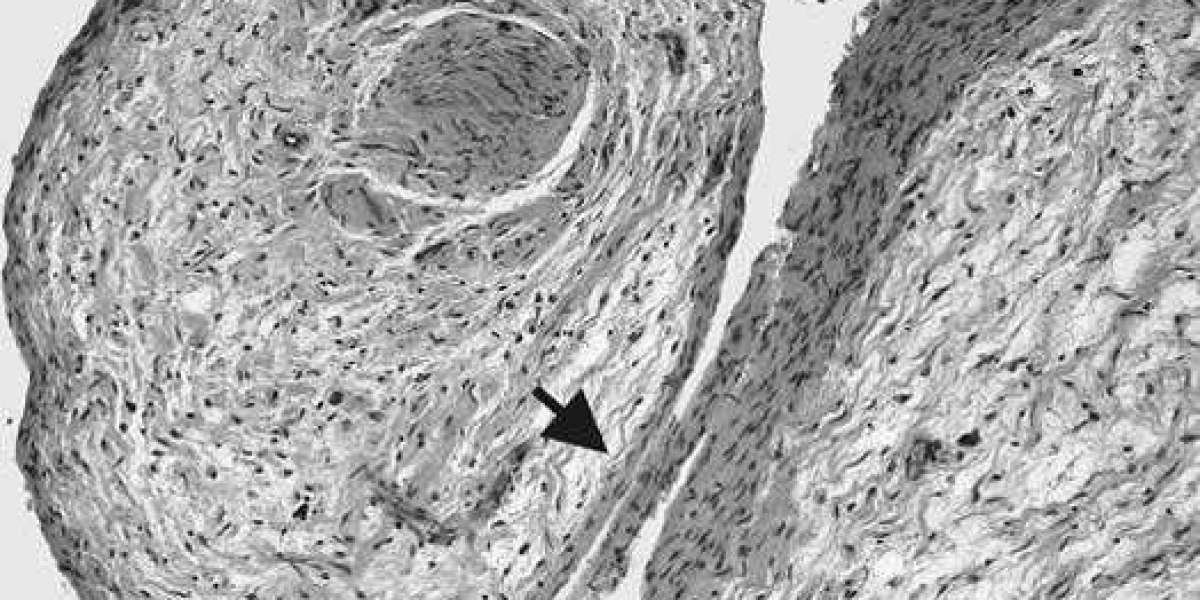Neurofibromatosis type 1-associated plexiform neurofibromas (NF1-PN) represent one of the most challenging manifestations of neurofibromatosis type 1. These complex nerve sheath tumors are driven by genetic mutations that trigger abnormal nerve tissue growth, posing significant treatment challenges for clinicians and serious quality of life implications for patients. However, recent clinical breakthroughs and market developments are setting the stage for a new era of therapeutic interventions. With robust epidemiological data, evolving treatment paradigms, and promising market forecasts, stakeholders across the healthcare continuum are witnessing a transformative period for NF1-PN management.
For more in-depth insights on NF1-PN treatments and challenges, download the full report @ NF1-PN Market Report.
NF1-PN Epidemiology and Clinical Challenges
NF1-PN is characterized by the development of multifocal, benign tumors that often arise in anatomically complex areas such as the head, neck, chest, or spine. These tumors, although non-malignant, can lead to severe complications due to their size and propensity to compress critical structures. Surgical intervention, long considered the standard of care, is associated with significant risks. The intricate nature of these tumors demands a multidisciplinary approach—integrating expertise from genetics, neurology, radiology, and surgery—to effectively manage both the physical symptoms and the emotional burdens carried by patients.
The epidemiological landscape of NF1-PN highlights a considerable burden on healthcare systems worldwide. In the United States, approximately 30% of diagnosed cases occur in children, while adults account for the remaining 70%. This distribution underscores the need for treatments that are effective across different age groups. Market data reveal that in 2023, the U.S. market alone generated nearly USD 230 million in net sales revenue from NF1-PN therapies, contributing significantly to a global market size estimated at around USD 380 million. European regions, particularly Germany, have also emerged as key markets, with Germany accounting for approximately USD 32 million among the EU4 and the United Kingdom. Such demographic and geographic insights are essential for guiding both clinical strategies and market positioning.
NF1-PN Market Dynamics and Forecast
The NF1-PN market is experiencing rapid growth, driven by an increasing understanding of the disease’s molecular basis and the development of targeted therapies. Forecasts predict substantial market expansion through 2034, buoyed by ongoing research and heightened investment in personalized medicine. Analysts project that the evolving landscape—characterized by breakthroughs in targeted drug development and improved patient management strategies—will further accelerate the adoption of innovative NF1-PN treatments. This surge is not only reflected in clinical outcomes but also in the financial performance of companies developing these therapies.
Key market trends indicate that the integration of genetic research into clinical practice is enabling more refined therapeutic strategies. This shift is prompting NF1-PN companies to pivot from traditional surgical approaches toward pharmacological interventions that target the underlying genetic mechanisms of tumor growth. Such strategic realignments have profound implications for both market size and the long-term sustainability of therapeutic pipelines, as pharmaceutical firms and biotech companies continue to invest in research and development aimed at meeting unmet clinical needs.
Emerging NF1-PN Therapies and Drug Pipeline
One of the most exciting advancements in NF1-PN treatment is the emergence of targeted therapies, particularly MEK inhibitors. These drugs are designed to disrupt the cellular signaling pathways that promote tumor growth, offering a more precise and potentially less toxic alternative to conventional treatments. KOSELUGO, a MEK inhibitor developed through a collaboration between AstraZeneca and Merck, has gained significant attention, especially in the treatment of pediatric patients with inoperable NF1-PN. Its ability to target specific molecular drivers marks a pivotal shift in how clinicians approach the disease.
In addition to KOSELUGO, a robust pipeline of investigational NF1-PN drugs is under active development. Agents such as Mirdametinib from SpringWorks Therapeutics, FCN-159 from Fosun Pharmaceutical, and PAS-004 from Pasithea Therapeutics are currently undergoing clinical trials. Early-phase studies have shown promising results; for instance, PAS-004 has not exhibited dose-limiting toxicities in Phase 1 trials, prompting its external Safety Review Committee to recommend the continuation of higher dose regimens. These findings highlight the potential for these novel agents to offer safer and more effective treatment options, further diversifying the NF1-PN drug pipeline.
Another noteworthy addition to the therapeutic landscape is HLX-1502 from Healx. Recognized by the US FDA with Fast Track Designation in October 2024, HLX-1502 represents an innovative approach to managing NF1-PN. This designation not only underscores the drug’s potential to address significant unmet medical needs but also accelerates its developmental trajectory, allowing it to reach patients sooner. The convergence of these various therapeutic candidates underscores the dynamic nature of NF1-PN research and highlights the importance of continuous innovation in this space.
For more detailed insights and the latest updates on NF1-PN Pipeline drugs visit the NF1-PN Emerging Drugs.
NF1-PN Clinical Breakthroughs and Market Trends
The rapid evolution in NF1-PN research is a testament to the power of collaboration between clinical scientists, pharmaceutical companies, and regulatory bodies. As the understanding of NF1’s genetic underpinnings deepens, clinicians are moving away from a “one-size-fits-all” approach toward more personalized and targeted treatment regimens. The introduction of novel MEK inhibitors and other targeted therapies is reshaping the NF1-PN treatment paradigm, offering hope to patients who previously had limited options.
Market trends further reflect this clinical progress. With improved diagnostic tools and a better understanding of the patient journey, there is a growing emphasis on early intervention and comprehensive care. Multidisciplinary treatment teams are increasingly vital, enabling the integration of surgical techniques with emerging medical therapies. This holistic approach not only improves clinical outcomes but also enhances patient quality of life—a critical consideration in a condition as complex and multifaceted as NF1-PN.
The market dynamics are equally promising, with projections indicating sustained growth in net sales revenue and broader adoption of innovative therapies across key geographies. The United States continues to lead the market, while significant contributions from Europe and Japan signal a global shift toward embracing advanced treatment options. For NF1-PN companies, the confluence of strong market forecasts and encouraging clinical data represents a compelling investment opportunity, paving the way for further research and development initiatives.
Integrating Multidisciplinary Care in NF1-PN Management
Effective management of NF1-PN requires a comprehensive and collaborative approach. Given the complex nature of these tumors, the integration of various medical disciplines is essential to provide optimal patient care. Geneticists, neurologists, radiologists, and surgeons must work in unison to design treatment strategies that address not only tumor reduction but also the overall well-being of the patient.
This multidisciplinary approach is particularly important when considering the limitations of traditional surgical interventions. Surgical removal of NF1-PN, while sometimes necessary, is often associated with high rates of recurrence and postoperative complications. As a result, clinicians are increasingly turning to pharmacological treatments that target the molecular basis of the disease. By combining these novel therapies with traditional surgical methods when appropriate, healthcare providers can offer a more balanced and patient-centric approach that addresses both the immediate and long-term challenges of NF1-PN.
Moreover, the integration of comprehensive care plans facilitates early intervention, which is critical for improving clinical outcomes. By recognizing the importance of early diagnosis and timely treatment, the medical community can better manage the progression of NF1-PN, ultimately reducing morbidity and enhancing quality of life for affected individuals.
For further insights and detailed research on NF1-PN Epidemiology, visit the NF1-PN patient pool.
Future Outlook: NF1-PN Forecast and Market Growth
Looking ahead, the future of NF1-PN treatment appears increasingly promising. Continued advancements in genetic research and targeted drug development are expected to drive further innovation in the field. Market forecasts up to 2034 suggest that the current net sales revenue of USD 380 million is just the beginning; ongoing clinical breakthroughs, coupled with strategic investments from NF1-PN companies, are likely to propel the market to new heights.
As more investigational drugs move through clinical trials and receive regulatory approvals, the NF1-PN pipeline will continue to expand, offering a broader array of therapeutic options for patients. This growth is expected to be supported by enhanced awareness among healthcare professionals and increased patient advocacy, both of which are key drivers in the adoption of advanced treatments.
The shift toward personalized medicine and multidisciplinary care is already reshaping the landscape of NF1-PN management. As research unravels the complexities of the disease, the integration of clinical expertise, innovative therapies, and comprehensive care strategies will play a pivotal role in transforming patient outcomes. The journey toward a better understanding and treatment of NF1-PN is marked by continuous collaboration and relentless innovation—factors that will undoubtedly define the future of this niche area of oncology.
Conclusion
In summary, the management of neurofibromatosis type 1-associated plexiform neurofibromas is undergoing a transformative shift. With the advent of targeted therapies, particularly MEK inhibitors such as KOSELUGO, Mirdametinib, FCN-159, and PAS-004, along with promising investigational agents like HLX-1502, the treatment landscape for NF1-PN is evolving rapidly. These clinical breakthroughs, combined with strong market trends and forecasts, highlight a future where personalized medicine and multidisciplinary care become the norm rather than the exception.
The evolving NF1-PN market dynamics, characterized by robust epidemiological insights and growing net sales revenue, underscore the importance of strategic investments and ongoing research. As NF1-PN companies continue to explore innovative treatment modalities, the emphasis on early intervention and comprehensive care will be crucial in addressing both the clinical and emotional challenges associated with this debilitating condition. Ultimately, the convergence of clinical breakthroughs, market growth, and collaborative care strategies heralds a new era of hope and improved patient outcomes for those affected by NF1-PN.
To understand which factors are driving NF1-PN market trends, download our full report.
Read More
- Plexiform neurofibroma Pipeline Insight
- Neurofibromatosis Type 1 (NF1) Epidemiology
- Cutaneous Lupus Erythematosus Market Insight
About DelveInsight
DelveInsight is a leading business Healthcare consultancy and market research firm specializing in life sciences. It assists pharmaceutical companies by offering comprehensive, end-to-end solutions to improve their performance. Access all our healthcare and pharmaceutical market Competitive Intelligence Solutions.














